#calvin and hobbes without context
Explore tagged Tumblr posts
Note
As if I didn't have enough reason to completely write off discussing r00by on hellsite: you can't even get a bit annoyed with *one bit of exposition* during vol 6's bridge fight without that CXE loon jumping in to rageshit all over the notes. If you need more context, there's 2 posts over on onceuponalegendbg-rwby. I'm the dope with a 'Calvin & Hobbes' avatar.
You goobers are always in my inbox getting mad as fuck that we do not share opinions and it endears me to you deeply. It's like having a little brother almost. You can play Tails if you want
7 notes
·
View notes
Text
You only need as much information about your character as is necessary to tell a story.
I see a lot of people stressing that they don’t feel they’ve developed their protagonist enough to begin their story. And in some cases, that’s possibly true. But in a lot of cases, these folks often have a pretty fleshed out profile of their character’s appearances, likes, dislikes, and so on, yet still feel it isn’t enough.
Hey, remember Calvin & Hobbes? It’s a comic strip series beloved by many, including me. We never know Calvin’s last names, or the names of his parents, or the exact nature of his dad’s job, or how they met, or their lives before being his parents. We don’t know anything about Susie’s family, or the bully Moe or babysitter Rosalyn; they’re only seen in the context of their interactions with Calvin. We don’t know about the lives of his teacher or principal outside of school. We don’t even know the street that he lives on, or the name of the city. It could literally be any suburbia, and I think that’s the point. This is Calvin’s world as he understands it, where Mom and Dad’s names are just Mom and Dad, and Dad’s job is just some ambiguous office, etc. While Calvin’s imagination is huge, it’s contrasted by his reality being very small and localized, confined almost exclusively to his home, school, and neighborhood, with occasional trips to the doctor, store, beach, museum, or zoo. In fact, the creator Bill Watterson regretted the story in which he added Calvin’s Uncle Max specifically BECAUSE of how it expanded the potential of Calvin’s world, especially since it required some awkward writing to avoid having him call the mom and dad by their names, and Watterson very much wanted them to remain unnamed.
This is a world that is deliberately small and information deliberately scant, and it works MARVELOUSLY. Calvin & Hobbes is the world through the eyes of a creative, hyperactive child and it’s perfect like it is without us needing to know everyone’s family tree, zodiac sign, favorite food, and political affiliations. Now, does that mean NO story needs that information? Absolutely not! There are stories where that might be relevant or even ESSENTIAL information to include about a character.
The question is, is your story one of them? Perhaps, instead of trying to work out your cast down to the last detail, work out what your story will require from your cast, and build their bios based on that. It’s not BAD to have superfluous details, and they’re often very fun for fans, but one should also avoid stressing out about lacking them when it’s unlikely they’ll come up in-story.
[As a note, this is one of the VERY many differences between story characters and RP characters; RP characters often need to come with very thorough bios and headcanons for others to consider them well-developed or worth interacting with, and because you alone don’t control the story, virtually ANYTHING can come up. Hence why a lot of people feel they need their character’s astrological chart worked out, their blood type, a list of allergies, and where they attended elementary school, since all those things may get asked in RP—-but you don’t NEED them for a story unless YOU make it that way!]
22 notes
·
View notes
Photo
Wait
THAT'S what a snow goon is???
This is not a thing where I grew up and if the term was ever mentioned in Calvin and Hobbes, I've long-since forgotten it. So when it showed up in Stardew Valley without any other context I just assumed that it was one of the many, especially seasonal, phrases that Bored Ape had changed.
I have been wondering alongside Sebastian FOR YEARS what Demetrius' problem was that he made Sebastian take down his snow goon, because I thought it was just a Stardew-ification of "snowman".
Finally finally finally that bit of dialogue makes sense!
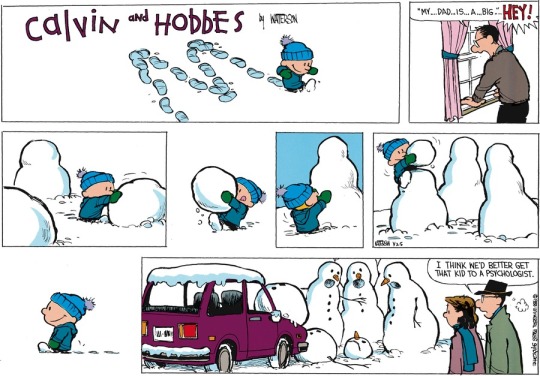

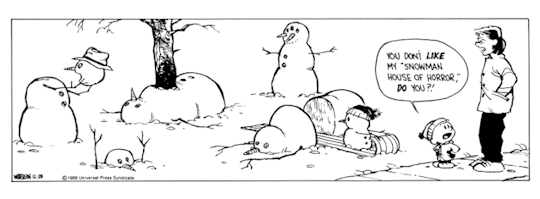







73K notes
·
View notes
Text

#calvin and hobbes without context#calvin and hobbes#funny#aesthetic#wholesome#cartoon#comic#reaction image#bill watterson
40K notes
·
View notes
Photo
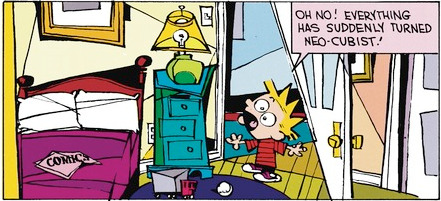
Man I hate when that happens
0 notes
Note
Re: Capitalism vs Calvinism (you make a solid point, btw), do you have any thoughts on why the two are conflated as much as they are?
For context, here is the post that this is about.
There are sort of two ways to answer that question:
Why is it natural or tempting to conflate capitalism and Calvinism? That is, what are people getting right when they do this?
Why do people make the mistake of conflating capitalism and Calvinism -- what leads them to get it wrong?
The answer to the first question is pretty obviously that the culture of capitalism in northwestern Europe was strongly conditioned by the culture of Calvinism. They grew up at the same time, intertwined with each other. The Commercial Revolution, people other than Jews (and much more numerous) who were allowed to charge interest on loans (which Catholics couldn't), etc. It also has to do with the Calvinist doctrine of predestination and how people's success and industriousness in the world were taken to be signs of God's favor -- not that you could earn it, because God's grace is given by His free will alone, but it was supposed to be an indication that God liked you and was allowing you to be virtuous (which you couldn't claim credit for on your own).
The ideology we think of as capitalist, about how people are naturally lazy and selfish and need to be manipulated with the right incentives into serving the public good, is originally Calvinist: it views human nature as irretrievably fallen without God's special grace (as I learned in a very interesting talk on Hobbes recently). You can't teach people to be truly good, to recognize the good and desire it for its own sake (as Catholic theologians thought you could, even though fallen human nature made that difficult); all you can do is set things up so that it's in their interests to do the things you (the community leader/ ruling authority) want them to do. @squeeful's tags on the instigating post nicely sum up this pessimistic view about human nature: #it's a viewpoint that people are inherently flawed #not in like a human way #but in a 'if given free time they will Sin'
So, given that people will Sin if you give them any leeway at all, you have to make sure you're taking up all their time with Something Productive. If they're working all the time, they won't have time to sin; if they're always thinking about work, they won't have mental space to think about sinning (which is just as bad as sinning, according to the Calvinist worldview); if they're "wholesomely" exhausted from work, they won't have the energy or inclination to sin. But of course people are naturally lazy and hate working, so how do you make them do this? Make it in their interests! Reward them with wealth and praise if they work all the time! Punish them with starvation and shame if they don't! The culture and worldview of capitalism follow from the culture and worldview of Calvinism.
OK, so, what about the second question? Why do people attribute this crap to capitalism alone rather than tracing it back to its deeper origin in Calvinism? Well, probably because capitalism is blatantly all around us, while Calvinist theology isn't -- at least, not obviously. We don't have stern bearded guys preaching at us about how God finds us loathsome and repulsive and it's only by His infinite grace and mercy that any of us are saved from the eternal torments of Hell that our degraded, sinful nature so richly deserves. Calvinism has been pretty thoroughly secularized in our daily experience, to the extent that we might think we're not religious at all, even when our mindset is profoundly shaped by religious ways of thinking.
But what I wanted to get across is that the dependency is asymmetric, not just in the sense that Calvinism came first and modern capitalism as we know it developed later, but in the sense that Calvinism could have given rise to systems and practices other than capitalism (and sometimes does), while capitalism as we know it (probably) couldn't have developed without the underpinnings of the Calvinist worldview. That's why you can see the Calvinist way of thinking even in anti-capitalist Social Justice movements, especially in the US, whose dominant culture has been profoundly shaped by Calvinism (from the English Puritans, the Dutch, and some proportion of early German immigrants). That is, you still get the view that people, or certain kinds of people, are inherently sinful (racist, sexist, homophobic, bourgeois, etc.); that the only way to not be contributing to evil forms of oppression is to be actively working against them at all times, including purifying your mind of all oppressive, bourgeois ways of thinking; and that even your moments of rest, idleness, and pleasure have to be justified in terms of the aims of work: your 'self-care' is so that you're refreshed to keep working more effectively for liberation, or else you're taking your joy in defiance of the systems that want you to be miserable, so it counts as its own form of resistance. And these subcultures, like OG Calvinism and its capitalist offspring, also rely heavily on the mechanism of shame to get people to be constantly policing their thoughts, words, and actions, ever-vigilant lest someone catch them Sinning. After all, people are sinful, so you can't rely on their natural inclination toward the good; you need to leverage their impure desire for acceptance and the good opinion of others.
(Figuring out how this cultural strain relates to the neo-Rousseauian "humans are Good, only the corruption of capitalism makes them evil" ideology in the online Left would be a further project... I suspect there's a tension between the official line and the way people actually think and behave subconsciously; and I also suspect there may be a bifurcation between the groups of people who are regarded as Fallen, on the Calvinist model, and those who are taken to represent the prelapsarian naturally good state of being.)
75 notes
·
View notes
Note
thinking about your post urging people to reading various genres and content and to challenge their reading skills... and i agree with you so much i definitely think it can strengthen one's reading comprehension and broaden prospective. like even if the quality isn't good or the genre isn't your thing, it can be a fun experience to read something outside of what you're used to. your post just makes me think how nice it can be to just read and gain anything, whether that's maybe knowledge or new queries, out of something new.
also i have to ask do you have any book recommendations? :)
YOU!!!! YOU GET IT!!!!!! one of the many values of reading is what you GAIN from books, and how you can apply that to ur life - whether its philosophical/existential questions or entertaining moments or parts that made you emotional in some way. even if you didnt like a book, walking out of it with the feeling that youve gained/felt something new or intriguing is its own reward.
and as for recommendations.....i have to say my favorite genre is definitely murder mystery, and my favorite author is agatha christie!!! the queen of plot twists imo. her books can be offputting to some bc a lot of the time her books dont always open up with the murder itself; many chapters are dedicated to the events LEADING UP to the murder in order to provide context and drop hints. not all of her books do this, but i can see why some people might become impatient when reading some of her work. that being said, my favorite book of hers had got to be the murder of roger ackroyd, but i also love the abc murders and hercule poirot's christmas.
as far as standalone books go, one book ive been devouring recently is i'm glad my mom died by jennette mccurdy, an autobiography about a former child actress who faced considerable abuse both in her home life and on set for some of her most famous works, most notably "icarly" and "sam and cat." its a hard read that contains descriptions of abuse, eating disorders, trauma, and child exploitation (sometimes sexual). ultimately, though, it becomes a book about healing as she describes life before and after the death of her abusive mother. mccurdy's writing style is so creative and snarky and clever, with some dark humor thrown in. not for those sensitive to the discussed themes, but definitely an engaging read.
i would also like to recommend a book that ive recommended to other people in my life before: penpal by dathan auerbach. this is a horror novel with themes of stalking, death (both humans and animals), and kidnapping. it originally started as a series of short stories online before being published as a full book. i dont want to talk too much about it bc i dont want to spoil anything, but its one of the most suspenseful and chilling stories ive ever read. highly recommend going into it blind bc it hits so much harder when u dont know whats coming.
finally, and this is a VERY different and more unconventional choice, i strongly recommend reading calvin and hobbes. it was a newspaper comic strip that ran from 1985-1995, and it was what inspired me to start drawing and writing stories in the first place. there are several books and collections containing various comics from the strip's run, and theyre all fantastic. they will make you laugh, cry, and think. i know what youre thinking: "how can a newspaper comic be so good?" but trust me, TRUST ME, its one of the most inspirational works of art i have ever come across. without calvin and hobbes i likely wouldnt be where i am today, it literally changed my life. please read calvin and hobbes i am BEGGING you.
theres a LOT of books i love but i am currently living in an apartment farther away from my hometown, where i have a bunch more on my bookshelf. so sorry if these recommendations arent extensive enough i dont have access to my actual Book Supply akskdkdkd
thank u for letting me talk abt books!!!!! have a wonderful day/night/etc and always remember to keep reading :)
7 notes
·
View notes
Note
I LOVE NPAM!!! ... that's not a question.
is there ever plans for physical volumes of NPAM??
THANK YOU! That means a lot :')
As far as physical volumes go... I don't have anything planned at the moment for a couple reasons....
1. Finding a printer?? Dealing with shipping?? Money?? I don't even know where to start. A print-on-demand setup like Amazon would be nice, but they don't have great options for longer, image-based books. The typical comic collection is 128 pages, and their picture book option is like 32.
2. If you've seen any of my N(S)PAM (it's tagged if you haven't!) you'll know that my early stuff was super rough. Spelling errors, clunky art, and whatnot. I don't know if it's worth printing it all.
3. I suppose I could do a "best of" collection, or just a slug collection, but I'm a chronological completionist at heart (just made up that term). I want it ALL to be available IN ORDER.. or none at all.
4. NPAM is nine years old. For context, Calvin and Hobbes ran for ten years. Even minus Sundays and considering formatting, that's a ton of content to try and get printed! C&H was ten or eleven books.
5. NPAM has the sweetest and most lovely group of followers a person could ask for, but it's still a pretty small group, all things considered. It's hard to know how many people would actually be willing and able to make purchases, and if it'd be worth it. I eventually want to at least make some stickers or something, but at the moment I'm still scrambling to get back on schedule.
6. Here's a secret thought I've been entertaining... if I ever find the time and inspiration.. I could try a novella and go the amazon print-on-demand route. It'd be neat to do a longer story without having to maintain the standalone daily nature of a comic strip. I like writing prose but hardly ever do it. But if I ever do that it'll probably be another nine years before I finish it haha
TL;DR No current plans for a physical copy but I have a head full of dreams :)
6 notes
·
View notes
Text
I am so sick of living in “interesting times”.
I came back in from trying to just keep my own life survivable to see Americans actively trying to destroy democracy by raiding the capital** , and I sighed.
I should be shocked, but it seemed inevitable with the way the hate-monger-in-chief’s endless incendiary lies. It should NOT be this way. We should NEVER get so this is normal.
Look folks, a country runs because we agree it runs. The laws function because most of us want to obey them. America is based on us sharing a vision of democracy.
And that’s what’s scary. Clearly many, a minority but a frightingly large minority, no longer share, and possibly even understand, the vision of American democracy as we have all known it. Can we ever take our democracy for granted again?
We probably shouldn’t. That’s what the last 4years have taught me. America isn’t special. The line between us and things like tin pot dictatorships or mob rule chaos is very thin.
America isn’t in danger from “foreigners”and never really has been. The threat has always been ourselves, Americans that toss around “patriot” without understanding what it means.
Comic character Pogo said it in an environmental context, but I think it applies here: “ We have met the enemy and he us us.”***
**And HOW did they get in? Well, geez, look at the restraint authorities use with this mob and the sledgehammer force used against, say, BLM protestors and it’s kinda obvious. And terrifying. They just can’t see who is the actual enemy.
***By us I mean “Americans”. Of course lots of us do NOT see ourselves in these folks, but technically we all are.
And go look up Walt Kelly’s Pogo, one of the greatest comic strips ever. I wasn’t around to read it originally, but thanks to reprints I can say it’s my fave ever (sorry Calvin & Hobbes).
10 notes
·
View notes
Photo
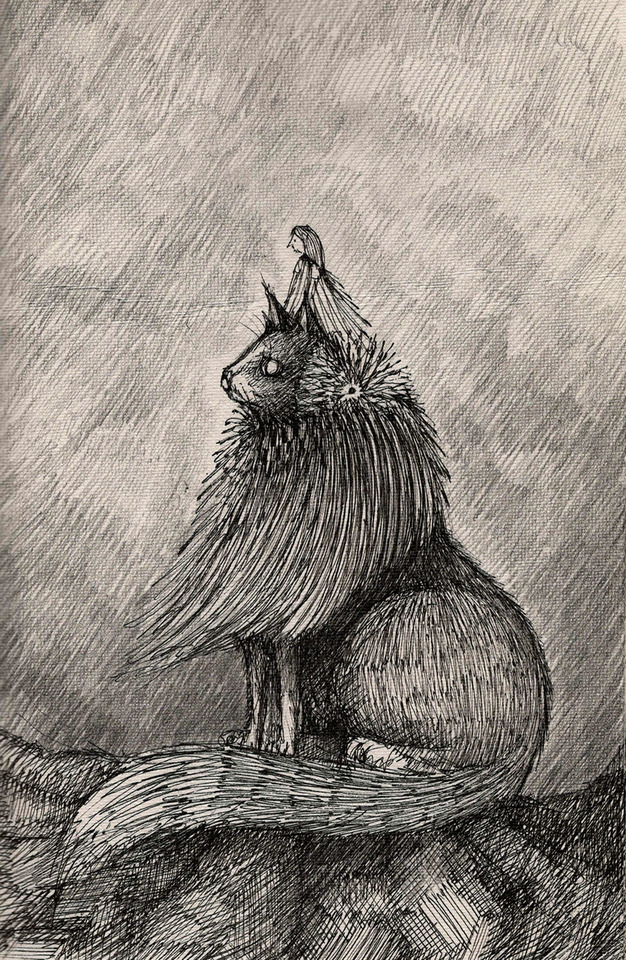
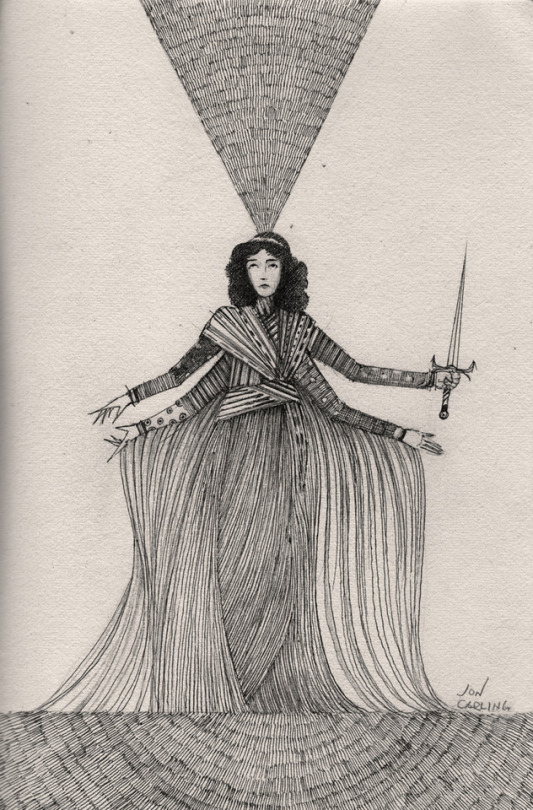
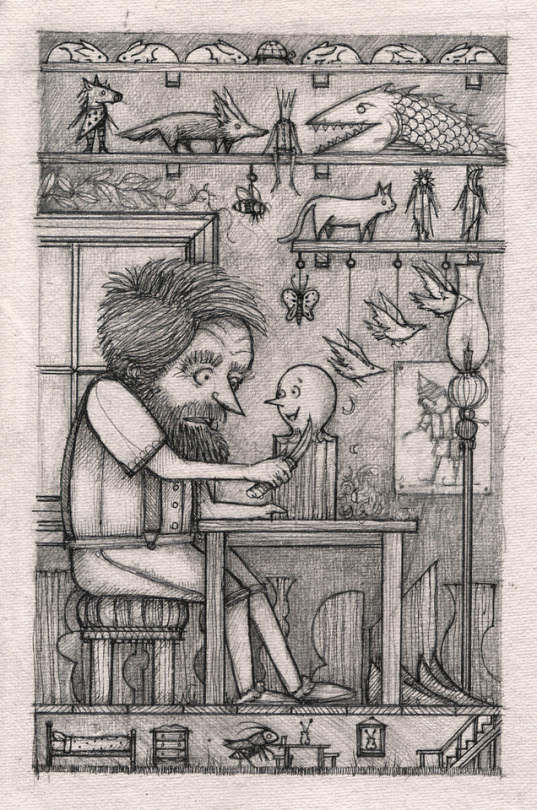
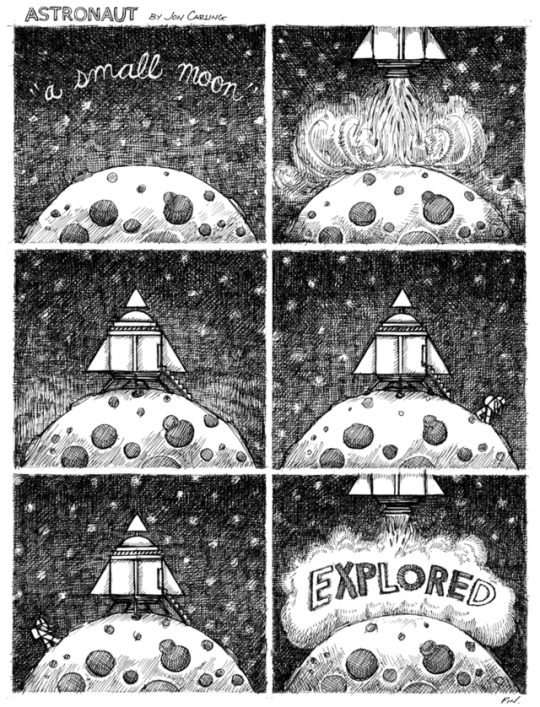
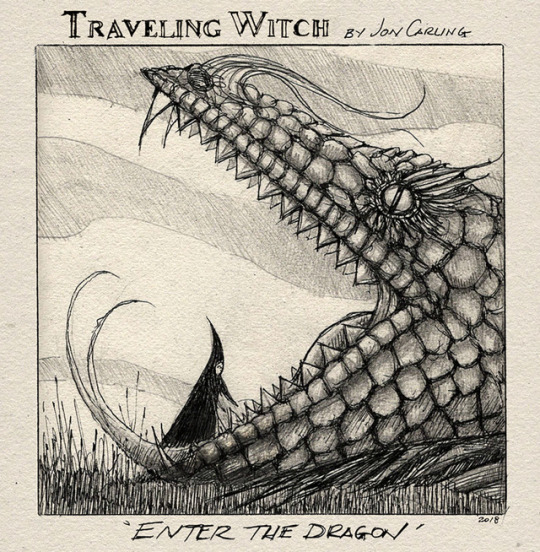

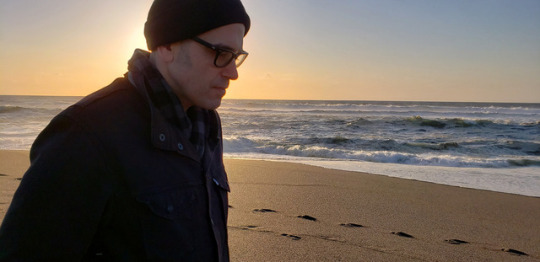
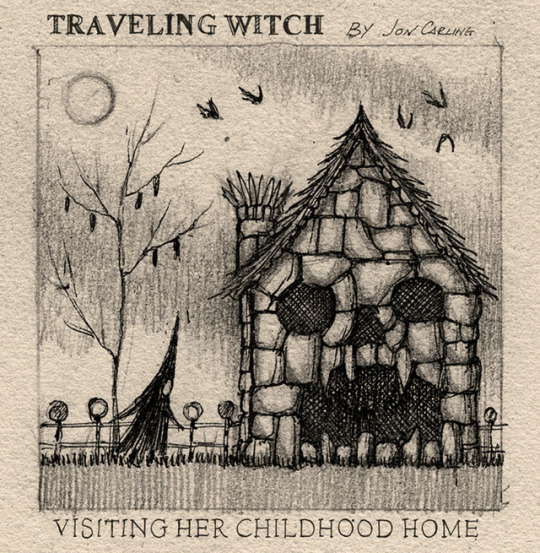
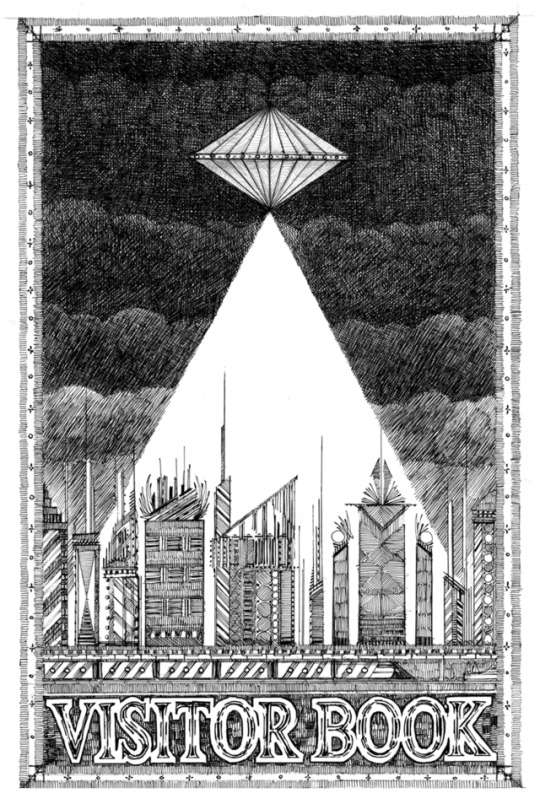
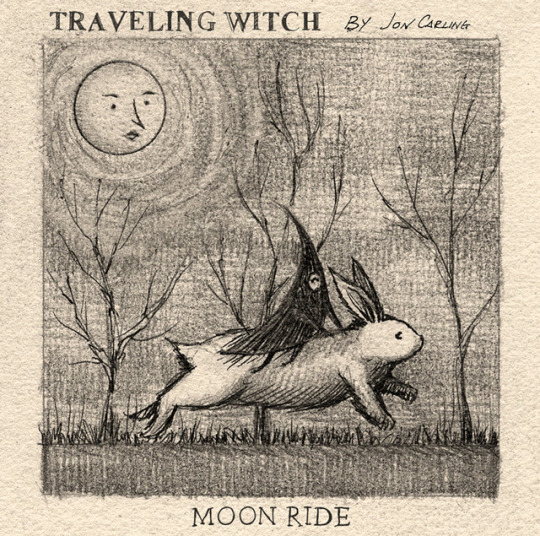
ART SCHOOL | INTERVIEW WITH JON CARLING
Scratchy black and white drawings and the ink meanderings of artist Jon Carling have always caught our eye. They’re like something out of a weird dream or out of an ancient children’s book–,and they’re always captivating. We’ve been following his prolific drawing career for a long time and recently caught up with Jon to find out more about his inspirations, his early artistic influences, and his recent dip into animating his beautiful works.
Photographs courtesy of the artist.
Introduce yourself? And where you’re from or currently residing? What’s your favorite thing about the city? My name is Jon Carling. I am an independent artist living in Oakland, California. I love the landscape. The beauty of the Northern Californian coastline is a life long inspiration to me.
How would you describe your work to someone who is just coming across it? Scratchy ink drawings, some scribbling, mostly black and white. Weird children's book art.
How did you first get interested in drawing or figure out that you had a knack creating awesome art? I have always really enjoyed making stuff. Drawing is really a habit from childhood, I would escape into my sketchbook, and my imagination, making up worlds. It is an awesome feeling to manifest ideas with some degree of success. That feeling is what keeps me doing it after all of these years.
Who and what were some of your early artistic influences? What artists inspire you these days? Early on, I loved Saturday Morning Cartoons, After school Cartoons, Fucking Sesame Street. All the 80s kids' stuff. Garfield Volumes, The Far Side, and Calvin & Hobbes.
When I was 6 or 7, a comic book store opened near my house, and that had a huge impact. The dude who ran it, Butch, was an old hippie dude who also had a huge collection of Japanese comics and toys.This is when Voltron and Robotech had just started airing in the U. S. . It was perfect timing to be exposed to all that incredible art.Greek Myths by D'Aulaires was my first book, and basically my bible. I think you can see the influence on my work from that book.
These days, I have been studying animation, so, I have been admiring the classic cartoons and animation from early film, all the way up to today. I have been reading 'Elemental Magic' by Joseph Gilland.It is a book all about traditional animation special effects. Amazing.
Not only do you produce a lot of drawings, but also create zines and now dabbling in animation. Tell us a little bit about how you ended up animating your drawings? Obviously, I have a love for cartoons. Creating a cartoon of my own has been something I have dreamed of forever. I have created short animations over the years using traditional methods: Paper and pen on a light table, scanning everything into photoshop, and putting it all together in there. It takes forever, and it can be pretty discouraging when you are sitting there doing data entry for hours.
Recently, a friend let me try out his Ipad Pro, and I am blown away by how much better the pen interface has become. I got excited about the possibilities for animating and started researching tablets. And, after years of being very reluctant to using digital tools to make my work, I finally got a drawing tablet. I ended up getting the Samsung S4 tablet instead of the Ipad Pro because I feel like the pen and the screen are better suited for me and my work. I am using it everyday, I love how fast and clean the process is, while keeping the feel of my lines. Now I have a Huion Kamvas monitor for my computer too, I am getting the feel for the whole process, but, I am excited about what I can do now.
As exciting as it is, pen and paper is always closest to my heart.
What are your essential art tools and materials? I really just need a sketchbook, a pencil (Sumogrip .5) , and a pen (Pilot Hi-Tec-C 03). If I have that with me, I am quite happy.
How do your ideas take shape? How do you get from start to finish? What’s your process? I love to daydream. I have a bunch of ongoing stories in my head that I always turn to if I want to go somewhere.Other times, I just draw without any idea or expectation. I follow the pencil and start fleshing things out.I love phrases, sometimes out of context. A simple phrase can be the spark for a huge idea.
How has your style of drawing changed or evolved? What allows you to grow artistically? I don't know what is changing exactly. The cross-over digital art is new, so, I am sure it will alter my work to some degree.I feel like I am always refining and hammering out a more perfect version of the world in my head.
What has been the most challenging project you’ve worked on? Last year, I had the opportunity to illustrate Carlo Collodi's 'Pinoccio' for an Italian publisher.It was almost 200 illustrations with a tight schedule. It was just an epic amount of drawing, and when it was finished, I was able to travel to Italy for the release, and it just turned into a really magical experience.
What was the hardest thing about it and the most rewarding? The discipline to complete the work, while maintaining quality that honors the book. It was a grind for large portions of the work, but, the end result made me realize how much good comes out of genuine work applied to a dream.
What was your last adventure that showed up in one of your illustrations, thematically or just visually? Oh, it probably had something to do with a dream that involved a bird headed soldier dragging my injured body off the battlefield.
What advice would you give someone who wants to follow in your footsteps and pursue art? Make sure you are doing it regardless if it is your "job". I am passionate about drawing, it is what I do, I don't see it as my career. First and foremost, I do it for myself.
What’s your best Art School tip that you want to share with folks? By all means, enjoy yourself, and the time you have. I would make sure you have put yourself in the direction that fits best with your specific way of creating.Art School costs so much money, I don't think a truly determined person needs to go at all. If you love art, and the creative process, you will seek knowledge.The debt from art school can crush any hopes for a fulfilling career in the field.
What are your favorite style of VANS? I love the ComfyCush Era style and fit. They are extremely comfortable and look super cool.I also love the traditional white slip-ons, they are the best shoe in the world to draw on.
Anything you can share that is coming up? Last year, I created a limited hand cast resin figurine of my 'Traveling Witch' character. You can purchase the second edition in my Etsy store, along with other witch loot. FOLLOW JON | WEBSITE | INSTAGRAM | SHOP
389 notes
·
View notes
Quote
The boy says, "This is a job for STUPENDOUS MAN" Here's what we didn't have a crimson cape and cowl Here's what we did have a moral victory
Nope, We Are Six
#adorable#also probably doesn't make sense without context#calvin and hobbes#crossover#nope#we are six#daily fanfic quote
2 notes
·
View notes
Text
The fate of Nintendo Youtube music and why attacking Nintendo is not the answer
So recently it has come to my attention that BrawlBRSTMs3 X as well as several other notable youtube music channels will be taking down all of their Nintendo content in response to copyright blocks issued by NIntendo. While I am somewhat saddened by this news in hindsight it is not too surprising especially with Nintendo’s revised content guidelines as of late 2018 which were likely done in response to the massive Smash Ultimate OST leak. Unsurprisingly people are harping on Nintendo and calling them greedy, evil, selfish etc. This is not the first time a situation such as this has occurred and as usual people apparently seem to be unable to consider Nintendo’s actions in the context of the company itself.
To understand why companies like Nintendo are so strict with their IP you need to understand the way copyright law works in general. The general gist is that you cannot just simply be aware someone is using your content without your consent you are also generally expected to show that you are actively enforcing and protecting your IP. If you do not then you risk damaging the integrity of your brand or in worse cases losing your trademark. This is especially true in places like Japan which from what I hear IPs that go unprotected tend to get dumped into public domain fairly quickly.
As a somewhat unrelated example, look at what happened with Calvin and Hobbes. Bill Watterson generally avoided licensing out his characters and from my understanding was generally reluctant to go after bootleggers which is what led to all those pissing Calvin decals. By the time United Press Syndicate the distributor of the Calvin and Hobbes comics decided to take action it was pretty much too late as the strip had already ended and they lacked the rights to license the materials.
While I will miss the extensions I am not bothered too much as he will still carry most of my favorite non Nintendo music such as Sonic. Of course I listen to plenty of other music channels such as Crunchii and Truesonic 1. To answer the question why doesn’t Nintendo as well as other game companies make their OSTs more wildly available to the public you only have to look at Youtube itself. It would not surprise me in the slightest if the fact that many people just listen to game music on youtube is arguably the biggest culprit for killing any motivation for game developers to put their OSTs on sale. To those of you who are unaware Nintendo seems to actually have released a few more of their game OSTs on certain digital stores. You can actually buy the Kirby Planet Robobot OST on google play believe it or not. If we ever see a Nintendo OST released on google play or itunes why not show your support by actually buying it. If the OSTs sell good enough then Nintendo might feel encouraged to release more.
The other issue I think people often seem to overlook is the ownership of the music itself. Looking at Smash Ultimate it’s pretty obvious why Nintendo cannot just release a standalone OST considering how the large amount of third party songs included is a massive legal minefield in itself. If you ever wondered why Mega Man and Castlevania got more love music wise in Smash compared to some other series its because the soundtracks for those games are don’t really suffer from the same sort of ownership headaches that plague the OSTs for the classic Sonic games and Final Fantasy The rights to Sonic 1 and 2′s soundtrack are mainly owned by Masato Nakamura and Dreams Come True while with Sonic 3 there is the large elephant in the room that is Micheal Jackson which has been the primary reason Sonic 3 and Knuckles has been omitted from many recent Sega compilations and rereleases as well as why they stated their probably won’t be a Christian Whitehead remaster of Sonic 3. This is primarily why in the Sonic Levels for Lego Dimensions the actual sonic music that was used was primarily from the Adventure games which Sega actually does own the rights to as well as the reason why the music for the sonic 1 and 2 stages were left out of the official Sonic Mania OST release. Its not surprising then that the music player for Smash Ultimate is basically like an offline version of Spotify.
I am pleased that BrawlBRSTMs3 X himself is handling the situation maturely and fairly well as well as taking the time to explain things in detail sadly though there are probably a lot of people who will still call for Nintendo’s head on a plate simply cause they have committed the cardinal sin of expressing their right to protect their IP. Always remember at the end of the day Nintendo is a business not a charity. As a company they owe you nothing and are obligated to protect and enforce ownership of their characters and IPs
6 notes
·
View notes
Text
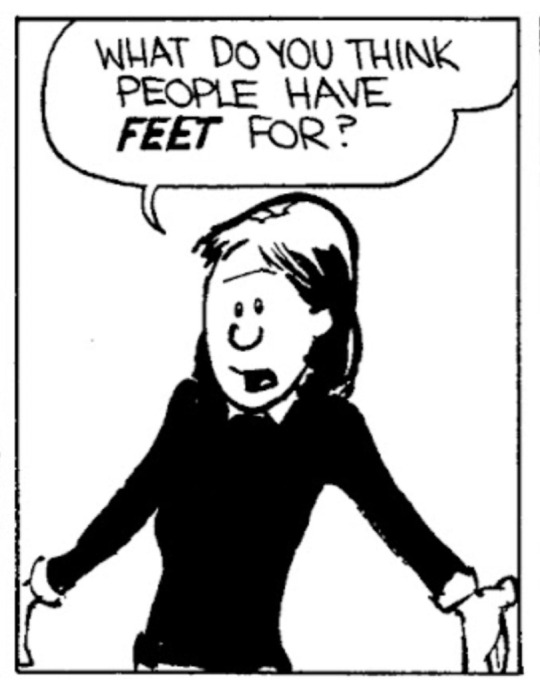
wrong answers only
#wrong answers only#calvin and hobbes without context#calvin and hobbes#funny#meme#cartoon#comic#reaction image#bill watterson
1K notes
·
View notes
Text
Story Pile: Cul De Sac
New Post has been published on PRESS.exe: Story Pile: Cul De Sac
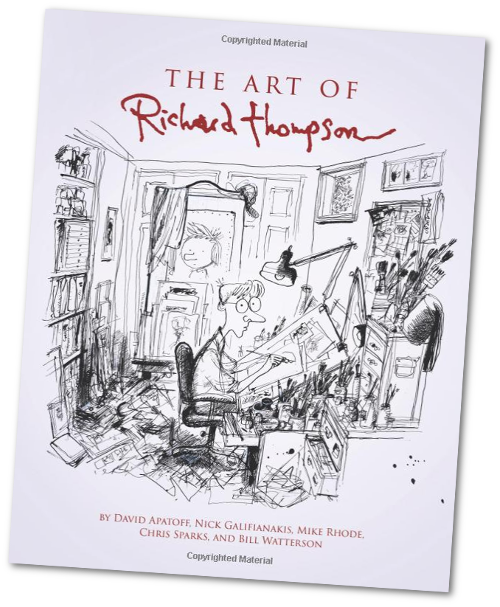
We’re going to do something a little bit different this time.
This Story Pile is going to be about the newspaper comic Cul De Sac, a comic I really like, but which is also, unlike other media I cover, actually kind of already represented online in its entirety as it is. Like, if you want to go read Cul De Sac, you can… just… do that. The other thing we’re going to talk about is Calvin and Hobbes, which Bill Watterson, the creator, has been similarly archived online, but also crucially, not by me.
Normally I break up these essays on media with pictures from the media in question, or youtube embeds or whatever, but GoComics lacks that functionality and while I could always take the strips, upload and offer them in the context of my own work and you know, review and educational purposes (which it is), I’d still feel just a bit of a dick about it. This is much as with the work of Gary Larson, who has asked that people not circulate Far Side strips online, and, well, they do anyway.
With that in mind, I’m making the conscious decision to not put any of the comic strips here in this blog post. Instead, I’m going to try and keep it short.
It seems one of those most millenially appreciated things is Calvin and Hobbes. There don’t seem to be any people who actively think ill of it, and it has a sort of whimsical approach to the future that many of us can grasp and appreciate and cling to while, you know, roaring hellscape. There’s also something of a ‘thing’ about it, how Calvin and Hobbes wasn’t just a big deal but it was also a big deal how it went out – Bill Watterson refusing to let his work be milked for money forever, choosing to Not Be Rich in order to keep his work the way he wanted it presented. It’s a very pure narrative.
But, if you’re a fan of Watterson, do you wanna know what he’s a fan of?
Cul De Sac is a comic in the same basic vein as Calvin and Hobbes, set later and weirder. While Calvin and Hobbes followed a kid who stayed somewhere generically eight forever, the seven years of Cul De Sac followed Alice, a four year old girl, and her family, who weren’t really dysfunctional or especially weird or anything, it was just, you know, life and the world as filtered through a four year old. It’s a comic about dysfunctional sincerity.
Cul De Sac is really funny.
I think the thing about Cul De Sac that makes it so funny to me is that the artist, Richard Thompson, was capable of a certain kind of separation of jokes; he could deliver a punchline in a strip, then a different punchline for a different joke, without the two jokes feeling smeared together. This is a problem you can find in work like Arrested Development, where a single well-delivered line by the right person can’t feel disconnected, can’t feel like it’s its own joke, meaning that you’re often left feeling like you missed something. The nonsequitir of Alice’s four-year-old vision of reality is totally different to that.
There’s only seven years of Cul De Sac to read in archive, nothing compared to Peanuts or For Better or For Worse or the forty years of Garfield. It’s visually interesting, heartwarming, genuine, funny in a very low-key snort-through-the-nose kinda way, emotionally resonant, and repeatedly takes opportunities to flaunt what a skilled artist Richard Thompson was.
Was.
Richard Thompson, the artist behind Cul De Sac, passed away in 2016, after a battle with Parkinsons Disease. There are collections of his work, of his art, of his comics all over the internet and you can go look them up. And you should – he’s funny, he’s really funny and in many cases his scribbly-ass sketch style vanishes as he replaces it with a wholesale excellent simulacra of someone else’s style, to make sometimes the most jagged of points. The man was really good at his craft. But that’s what I think, and I’m nobody special.
In Dilbert – of all things – there’s this running gag centered around the garbage man, who is a super genius. But he chooses to be a garbage man, occasionally fixing things Dilbert built and handing them back to him, seemingly with no interest in that it annoys Dilbert, or that he could use that to make a profit. The choices of this character are left wholly inscrutable, but it is repeatedly underscored he’s not stupid. He’s not weird. He’s just really, really smart. He’s a garbage man because he chooses to be a garbage man, and the fact that doesn’t make sense to us is meant to be part of the joke – after all, he’s way smarter than we are. The idea is that genius sees the world differently.
Bill Watterson saw the world in a way that let him create Calvin and Hobbes. And he loves Cul De Sac.
Check it out on PRESS.exe to see it with images and links!
1 note
·
View note
Text
Stuffed Fun
They say never to meet your heroes, but I would add not to revisit them either. Returning to someone or something that you once held in high esteem with the curse of fresh eyes has a similar effect to seeing it up close. It’s much easier to see the whole of something, warts and all, given the benefit of passed time and it’s hard not to take the reality of a former love falling short of one’s admittedly colossal expectations as a personal affront to everything one holds dear. That said, I’ve never been one to follow my own advice, so I recently revisited one of the defining pieces of media from my childhood; Bill Watterson’s Calvin and Hobbes. Despite the aforementioned tendency for childhood entertainment to not fully realize the rose-tinted memories that they inhabit, Calvin and Hobbes nevertheless seemed as vital as when I first read it. For good reason maybe, as it’s hard not to love Calvin. He’s an effortlessly charming scamp, moving around wildly across the strip, constantly in tow with him is his best friend, a stuffed tiger. It’s all instantly endearing and it’s not hard to understand why people are instantly drawn to inhabiting this world. Still, where other comics derive their following largely from the lengthiness of their run, it’s audience growing through syndication and long-term exposure, Calvin and Hobbes lasted a relatively paltry ten years. Add in its creator’s intense aversion to publicity and the comic’s lack of merchandising and it becomes increasingly strange to take for granted how often people of all ages treat it as a personal touchstone. The comic somehow attained a sustained cultural impact while never resorting to prolonged commercial overexposure. This continued relevance betrays a fundamental difference in the technical makeup of Calvin and Hobbes compared to its contemporaries, a key artistic decision that keeps it sticking in our public consciousness. There’s something at the heart of Calvin and Hobbes that’s genuinely affecting, and much more than say, Garfield. Whatever it is, this crucial creative choice of the series, the element that keeps us returning to it, what is the reason that so many of us care so much about the boy and his tiger?
First and foremost, Calvin and Hobbes is a traditional, four-panel comic strip. The Sunday strips would push wider, but for the majority of the strip’s run, a simple, black and white four panelled story would be what was offered. It’s important to identify the structure of the comic, as there is a direct link between how an audience consumes a piece of art and how it affects them. Fred Sanders argues that the statements made by the strip obtained a greater impact by its adherence to the traditional comic formula, noting that “Insensitivity to the medium-message connection” is what can cause a piece of art to be “bathetic when it attempts profundity” (Sanders, “What You Can Learn from Calvin and Hobbes”). This “medium-message connection” is crucial to understanding at least part of the strip’s appeal. Much like any other form of media, there’s a set of conventions that the average comic reader has been conditioned to expect. These conventions can either be met or subverted, but what is important is that they are respected. Watterson was adamant in refusing to license his strip for commercial merchandise because, in his slightly dramatic words, all the “licensing would sell out the soul of Calvin and Hobbes.” He goes on to say that “the world of a comic strip is much more fragile than most people realize“, revealing his belief that artistic and thematic consistency is key to the success of a piece of art (West, 59). It’s an approach that can provide a richer sense of story and characterization, but it’s also one that demands more from the readership. Since the only avenue with which the public had to these characters was through the comic itself, not through one-joke t-shirts or plush toys, to be a fan of the strip required a greater deal of engagement than it would for other comics. The investment that the strip cultivates was, at least partially, a direct result of it’s refusal to betray the message of its medium.
As compact as that sounds, I can’t imagine that it’s the primary reason for my own unending devotion to the series; somehow I think that the commitment of the comic to its chosen artistic medium was particularly resonant for a six year old. Beneath the purity of the comic as a comic, there’s another, more affecting facet: nostalgia. To some extent this is unavoidable, as comics are largely consumed during childhood and the memories associated with them oftentimes are rose-tinted. Nostalgia is behind all that unending disappointment, the type that springs from the contemporary discovery of something’s true quality. It can also work in the opposite direction, becoming a tool to obfuscate our current experience with the art into a mere recollection of our original experience with it. We are then no longer participating with the art itself, but rather with our perceived reaction to that same art. It makes it hard to detach yourself, from conflating your current opinions with the memory of your past ones. Is there a way to reconcile the sentiment of the past with the critical experience of the present? In “The Ghost of the Hardy Boys”, Gene Weingarten attempts to come to terms with the sheer awfulness of The Hardy Boys, novels that were once, to him, “the pinnacle of human achievement.” He delves into the author’s life story, the publisher’s tyrannical edits, the contexts behind the writing of each book. And while he realizes that the series is hardly superb, there’s always something that “made you turn the page”, an “all-too-brief moment in which the writer seems suddenly engaged” (Weingarten, “Ghost of the Hardy Boys”). While Calvin and Hobbes doesn’t suffer from this problem, Weingarten’s methods in finding his original attraction to the books without the lens of nostalgia lay in looking at the intrinsic nature of the books, the way that the small, engaging details drove the plots. So what intrinsic is hidden in the details of Calvin and Hobbes?
It’s hard to encapsulate a decade’s worth of artistic choices into a few easily digestible points, but some elements tend to stand out. Calvin’s idiosyncratic tastes, from the works of DuChamp to a magazine about bubble gum. The ever changing backgrounds, from completely empty to vividly inked and populated. The tension between fantasy and reality. A potential thread emerges, one of memory; not in the intellectual sense, but in the emotional one. The strip is able to transcend simple “nostalgia buttons” because it doesn’t ask us to remember specific shared moments or events, but rather specific feelings. We see Calvin being banished to his room and sulking outside his window in an imagined Martian landscape, filled with the brilliant colour and configuration that only childhood loneliness can muster. We see this and we don’t remember this exact event happening to us, but we remember feeling alone, misunderstood, ostracized. And we can remember the methods we used to try to escape from this unhappiness. As Libby Hill puts it in her retrospective on the series, “isolation breeds fantasy, which breeds isolation” (Hill, “Calvin and Hobbes Embodied the Lonely Child”). The rejection pushes one inwards and the continued time away from anyone other than oneself causes further rejection. It’s thoroughly emotionally exploitative, in that we can’t help but feel sorry for him. It triggers an uncontrollable empathy, as we’ve all been children and experienced that powerlessness. Watterson is reminding us what it felt like to be completely powerless, completely vulnerable, and completely alone, all within the realms of a four-panel comic strip. It's the kind of juxtaposition that tends to stick with people.
What’s significant about this specific type of juxtaposition is its usefulness in fostering both comedic and dramatic material. The incongruity can be mined for laughs, like Calvin tracking polls for his father as if he was a presidential candidate, or moments of almost unbearable resonance, like the repeated collision of Calvin’s hyper-vivid daydreams with the mundanity of his schoolwork. It’s non-escapist fantasy, the type that is fully inhabited by a dreamer who is nevertheless completely self-aware of the context of their situation. It’s reminiscent of early Simpsons episodes, where the family dynamic is grounds for great humour, but the creeping shadow of a burdensome reality consistently threatens to dramatically tear down the surrealist facade that has been ever-so carefully constructed. It was not uncommon for The Simpsons of the early 90s to have an average, slice-of-life storyline (like a housewife needing to get a job in order to make ends meet) that was punctuated by instances of brilliant absurdity (like that same episode featuring a 50 foot tall Marie Curie and a Scottish groundskeeper wrestling a wolf). Calvin himself best resembles a tragic combination of The Simpsons’ two child protagonists. Bart Simpson is the devious prankster, tirelessly putting every ounce of his energy into the next meaningless act of destructive mischief and Lisa Simpson is the isolated intellectual, forever an outsider because of her contextually inappropriate sophistication. Both The Simpsons and Calvin and Hobbes are consistently held up as all-time greats in their respective fields of entertainment, but unlike the latter, The Simpsons doesn’t have the benefit of an expedited run to sweeten the memory of its early quality. Indeed, the common rap on The Simpsons is that its creative decline came around the time when it started priding outlandish storylines over more emotionally grounded plots (Sullentrop, “The Simpsons”). Its downfall, according to the detractors of the show’s later years, came from the move towards treating its characters as a tool to deliver quirky jokes instead of treating them as a realistic family. Perhaps some of Calvin and Hobbes power is derived from the strip’s laser-like focus; it never forgets who or what is at it’s centre. While it deals with many topics, the power of imagination, the peculiarities of growing old, the fleetingness of the good times, the core of the strip is a young, confused, surprisingly wise little boy. The tragedy of Calvin’s character is that he lacks the inhibition or self-agency to prevent himself from slipping in and out of his chosen reality, but he’s granted the intelligence to be painfully self-aware of his circumstances. He’s been put in a world he can’t hope to understand or change and he knows just enough to realize the full extent of his powerlessness.
There’s a Sunday strip from 1989 that I think defines the entire series, as it’s one of the few moments where Watterson lets the curtain of imagination completely fall away. On March 26th 1989, Watterson, for the umpteenth time, showed us what an average day was like for Calvin, except this time, Hobbes is nowhere to be found. He starts his day off being yelled at by his mother to get out of bed, then he’s being berated by his teacher for not knowing the answer to a math problem, then he’s being threatened by a bully, then there’s homework, bad food, bath time, a turned off TV, and then back in bed again. His mother kisses him goodnight, reminding him that “tomorrow’s another big day!” And all alone in the dark, he sighs, broken and thoroughly sad. This is a terrifying comic strip. There is not even an attempt at humour here, no half-hearted jokes made, just full-bodied, unencumbered, childhood angst. This is a child that is dreading his every waking moment and finds the world he inhabits unbearable. Is it any wonder he needs a friend entirely of his own control and creation? This is a strip that best exemplifies how, according to Hill, Calvin and Hobbes “normalized the inherent loneliness that childhood can bring”, how the lack of any kind of control can lead almost inevitably to feelings of extended solitude (Hill, “Calvin and Hobbes”). This one strip is perhaps the series’ most devastating, precisely because of how it normalizes isolation, how it presents loneliness as life’s fundamental feature rather than an easy-to-avoid pitfall. Instead of asking how to deal with the death of our loved ones, it asks us about the death of desire, our motivation to wake up the following morning.
I’ll admit that despite my attempts to disentangle myself from the nostalgic web Calvin and Hobbes weaves, this strip is still distressingly evocative. Yes, the routine portrayed in the strip contains the average, normal events that all children go through. But it’s the mundanity that makes it worse. If we can’t deal with the everyday, what hope do we have to cope with everything else? And by not judging Calvin’s adverse reaction, Watterson provides validity to all forms of stress, regardless of age or status. Tony Kushner. in reference to Where the Wild Things Are author Maurice Sendak, once said that “for the great adult creators of children's books, the work at hand is a reclamation, through the difficult exploration of feelings most people have forgotten, of the past” (Kushner, “How hard can it be?”). Reclaiming the feelings of the past is exactly what’s happening here. In revisiting Calvin and Hobbes, I tried to confront my hero. I tried to deconstruct it and see what made it tick. But maybe all I was doing was trying to reassert what Calvin represented, to stake a claim in rebelliousness, whimsy, and crushing loneliness as the tenets of childhood. Maybe the series was like a companion, providing hope and comfort by showing us the universality of our feelings of solitude.
While there is undoubtedly a cathartic sense of relief that the series grants, there’s a nagging doubt that stating this is somehow antithetical to the core of the comic. Looking at other bastions of slightly melancholic children-oriented media, like Charles Schultz with Peanuts or Maurice Sendak’s aforementioned Where the Wild Things Are, there’s a tendency in them to portray children and adults as fundamentally different. Sendak’s adults were authoritarian figures and the Peanuts cartoons famously had a teacher communicate literally incomprehensibly through the nosies of an unidentified brass instrument. Calvin and Hobbes doesn’t really do that. The dichotomy between adults and children fades, where one finds instances of Calvin’s father being just as prone to staging a scene in a grocery store as his son is. The lack of distinction between the two seemingly disparate groups suggests something. Furthermore, the huge popularity of the comic strip suggests that there is a a deeper connection being forged than one borne out of surface-level enjoyment and to find it, we can revisit Kushner’s quote about Sendak. He specifically mentions how the work of the “adult creators of children’s books.” In a field where the best work regularly incorporates serious subject matter in an accessible way, their work is not simply an exploration or a celebration, but first and foremost a reclamation.
Think about the word “reclamation”. It’s not just taking back something, it’s about reasserting that it was always yours. Despite efforts to the contrary, whatever it is that’s being reclaimed has always been there; lurking in the shadows perhaps, but still there. One might immediately associate ”reclamations” with “reminders”, but in this instance, it’s more precisely related to a “realization.” A realization that we still have what we once had and that it never truly left. In the case of Bill Watterson, one needn’t look too far to see what he is making us realize. Hill’s assertion that her attraction to Calvin and Hobbes was “seeing a child…struggle with the world he inhabited” makes all the more sense in this light (Hill, “Calvin and Hobbes”). It’s the struggle that binds us. Regardless of age, creed, or affiliation, we all struggle everyday. Watterson reclaims that struggle by showing it through the lens of one intelligent, imaginative, and lonely child. The problems that Calvin go through are always articulated in a way that is not only widely accessible, but widely applicable. Take a strip from December 1987. Calvin is musing to Hobbes that he doesn’t understand the concept of Santa Claus. “Why all the mystery?” Calvin asks. “If the guy exists, why doesn’t he ever show himself and prove it?” And just in case the implication wasn’t clear enough, he ends the strip with admitting that “I’ve got the same questions about God.” That’s childhood pre-holiday anxiety combined with a grown-up crisis of faith. It’s an unending struggle that the comic reminds us doesn’t really go away.
When we’re confronted with the harsh realities of whatever situation we finds ourselves in, a natural reaction can be to ignore them. It can be overwhelming to have to deal with all of the troubling issues in the world and it’s all too easy to disregard them entirely. But Calvin and Hobbes doesn’t promote apathy. If anything, Calvin’s interest in such issues as environmentalism, mortality, and religion all point towards a call for a greater interest in pressing social matters. What it doesn’t do is offer pat solutions for how to deal with all of them, how to reconcile our struggle. Sure, sometimes it can help just to talk to a friend, but all too often we’re left alone, staring out the window at our blasted Martian dreamscape. And for Watterson, that’s okay. If Calvin can be said to be one thing, it’s persistent. We might be powerless, but that isn’t an excuse not to try. As long as we keep fighting, keep struggling against the issues, against the way we fit in the world, we have a reason to wake up. Tomorrow’s another big day, after all.
3 notes
·
View notes
Photo

-Day 10-
Laurie’s MBTI = INFP — Introverted iNtuitive Feeling Perceiving
INFPs never seem to lose their sense of wonder. One might say they see life through rose-colored glasses. It's as though they live at the edge of a looking-glass world where mundane objects come to life, where flora and fauna take on near-human qualities.
INFP children often exhibit this in a 'Calvin and Hobbes' fashion, switching from reality to fantasy and back again. With few exceptions, it is the NF child who readily develops imaginary playmates and whose stuffed animals come to life.
INFPs have the ability to see good in almost anyone or anything. Even for the most unlovable, the INFP is wont to have pity. Their extreme depth of feeling is often hidden, even from themselves, until circumstances evoke an impassioned response.
Of course, not all of life is rosy, and INFPs are not exempt from the same disappointments and frustrations common to humanity. As INTPs tend to have a sense of failed competence, INFPs struggle with the issue of their own ethical perfection, e.g., performance of duty for the greater cause. An INFP friend describes the inner conflict as not good versus bad, but on a grand scale, Good vs. Evil. The INFP believes that good ultimately triumphs.
Known as the "Healers," INFPs are idealistic and visionary. They are dedicated to their values and to their family and friends. INFPs strive to live a life that closely conforms with their values. Representing roughly 4 percent of the general population, INFPs are inquisitive and quick to see different potential scenarios. Healers work to comprehend people and to help them reach their own personal potential. They are resilient, willing to change, and accepting of others unless they oppose their core values. Healers have a profound sense of idealism that comes from a strong personal sense of right and wrong. They conceive of the world as an ethical, honorable place, full of wondrous possibilities and potential goods.
Strengths
Are concerned about the wellbeing of others
Perceive and are sensitive to the feelings of others
Have long-term loyalty and commitment
Possess a deep capacity for caring and love
Are driven to meet expectations of others
Strive for amicable, positive situations
Are supportive, nurturing and encouraging
Easily recognize and respect other's need for space
Express themselves well
Are adaptable and diverse
Weaknesses
Are often shy or reserved
Are protective of their personal space
Avoid conflict and criticism
Constantly search for praise and credit
May react emotionally to high-pressure situations
Have difficulty leaving bad relationships
Avoid scolding or punishing others
May take longer to share their feelings
Have perfectionist tendencies that may cause a lack of self-credit
Tend to display a lot of self-blame
Functional Analysis Of The INFP
Introverted Feeling
INFPs live primarily in a rich inner world of introverted Feeling. Being inward-turning, the natural attraction is away from world and toward essence and ideal. This introversion of dominant Feeling, receiving its data from extraverted intuition, must be the source of the quixotic nature of these usually gentle beings. Feeling is caught in the approach- avoidance bind between concern both for people and for All Creatures Great and Small, and a psycho-magnetic repulsion from the same. The "object," be it homo sapiens or a mere representation of an organism, is valued only to the degree that the object contains some measure of the inner Essence or greater Good. Doing a good deed, for example, may provide intrinsic satisfaction which is only secondary to the greater good of striking a blow against Man's Inhumanity to Mankind.
Extraverted iNtuition
Extraverted intuition faces outward, greeting the world on behalf of Feeling. What the observer usually sees is creativity with implied good will. Intuition spawns this type's philosophical bent and strengthens pattern perception. It combines as auxiliary with introverted Feeling and gives rise to unusual skill in both character development and fluency with language--a sound basis for the development of literary facility. If INTPs aspire to word mechanics, INFPs would be verbal artists.
Introverted Sensing
Sensing is introverted and often invisible. This stealth function in the third position gives INFPs a natural inclination toward absent- mindedness and other-worldliness, however, Feeling's strong people awareness provides a balancing, mitigating effect. This introverted Sensing is somewhat categorical, a subdued version of SJ sensing. In the third position, however, it is easily overridden by the stronger functions.
Extraverted Thinking
The INFP may turn to inferior extraverted Thinking for help in focusing on externals and for closure. INFPs can even masquerade in their ESTJ business suit, but not without expending considerable energy. The inferior, problematic nature of Extraverted Thinking is its lack of context and proportion. Single impersonal facts may loom large or attain higher priority than more salient principles which are all but overlooked.
2 notes
·
View notes